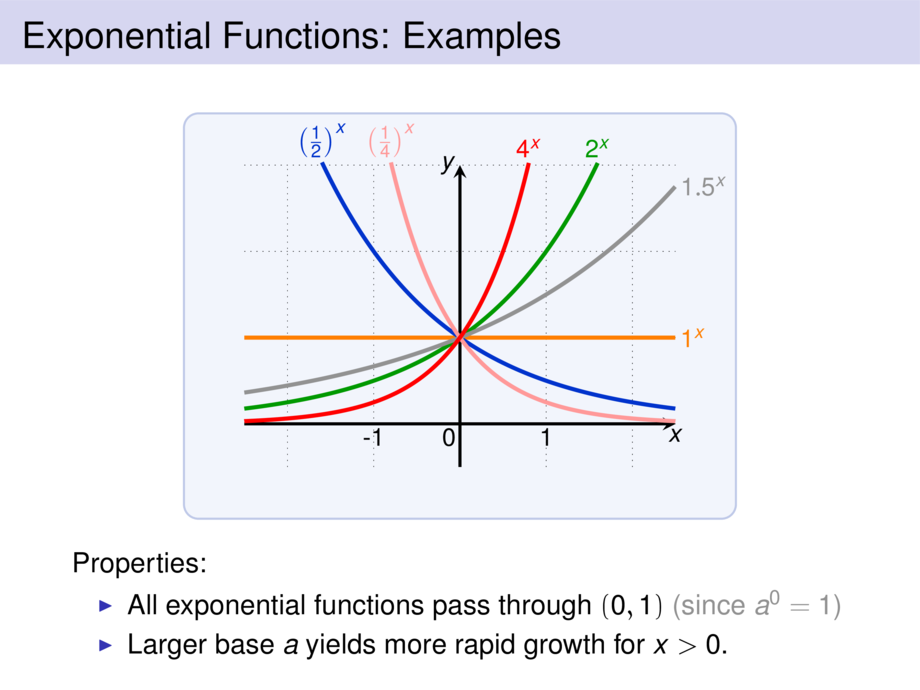



































































































130/353
\begin{frame}
\frametitle{Exponential Functions: Examples}
\begin{center}
\begin{tikzpicture}[default,baseline=0cm,scale=1.2,nodes={scale=.9}]
{\def\diaborderx{.7cm}
\def\diabordery{.6cm}
\diagram{-2.5}{2.5}{-.5}{3}{1}}
\diagramannotatez
\diagramannotatexx{-1,1}
\diagramannotatey{}
\begin{scope}[ultra thick]
\draw[orange] plot[smooth,domain=-2.5:2.5,samples=300] (\x,{1^\x}) node [right] {$1^x$};
\draw[cblue] plot[smooth,domain=-1.6:2.5,samples=300] (\x,{.5^\x});
\node[cblue,above] at (-1.6,{.5^(-1.6)}) {$\left(\frac{1}{2}\right)^x$};
\draw[cgreen] plot[smooth,domain=-2.5:1.6,samples=300] (\x,{2^\x});
\node[cgreen,above] at (1.6,{2^(1.6)}) {$2^x$};
\draw[gray] plot[smooth,domain=-2.5:2.5,samples=300] (\x,{1.5^\x});
\node[gray,right] at (2.5,{1.5^(2.5)}) {$1.5^x$};
\draw[pink!80!red] plot[smooth,domain=-0.8:2.5,samples=300] (\x,{.25^\x});
\node[pink!80!red,above] at (-0.8,{.25^(-0.8)}) {$\left(\frac{1}{4}\right)^x$};
\draw[cred] plot[smooth,domain=-2.5:0.8,samples=300] (\x,{4^\x});
\node[cred,above] at (0.8,{4^(0.8)}) {$4^x$};
\end{scope}
\end{tikzpicture}
\end{center}
Properties:
\begin{itemize}
\item All exponential functions pass through $(0,1)$ \textcolor{gray}{(since $a^0 = 1$)}
\item Larger base $a$ yields more rapid growth for $x > 0$.
\end{itemize}
\end{frame}

